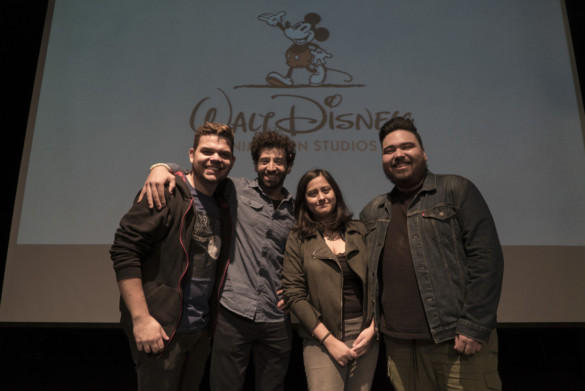Animator Andrew Feliciano discusses workflow, getting hired by Disney, and working on “Ralph Breaks the Internet”
By Kyle Roe
The road to your dream job can be awfully long and fiercely competitive, so it makes sense to start as early as possible. For Disney animator Andrew Feliciano, that journey began in 1990 when, at age five, he saw “The Jungle Book” for the first time. It was the movie’s final theatrical re-release in North America, arriving just in time to inspire at least one more child to become a Disney illustrator.
“’Jungle Book’ was the first film that made me want to be an animator,” Feliciano said. “Then films like ‘Aladdin,’ ‘The Lion King,’ ‘Beauty and the Beast,’ and ‘Hercules’ continued to inspire me and make me want to work in this wonderful field.”
Almost three decades later, Feliciano has worked on several successful animated features, including “Moana,” “Rio 2,” “Ice Age: Continental Drift,” and the Academy Award-winning “Big Hero 6.”

Animator Andrew Feliciano shares his tips and experiences with Academy of Art University students at the 79 New Montgomery Theater. Photo by Bob Toy.
Feliciano shared insights from inside the world of professional animation at a talk and Q&A session that took place at the 79 New Montgomery Theater on Thursday, Nov. 15. Academy students in attendance were treated with a behind-the-scenes look at selected scenes from “Ralph Breaks the Internet,” with a focus on Feliciano’s contributions to the film.
Most of “Ralph Breaks the Internet” takes place in Disney’s interpretation of the Internet as a massive, futuristic city, where Net Users are whisked along to different websites staffed by Netizens, the permanent citizens of the internet.
The film’s conceptualization of the internet was inspired by the inside of One Wilshire Boulevard in Los Angeles, which “houses all of the connections for all internet connection that takes place in North America,” according to Feliciano. All the artists for “Ralph Breaks the Internet” took a day trip from the Roy E. Disney Animation Building in Burbank to study the intricate, road-like electronic networks contained within the ordinary looking office building.
Feliciano also provided some background on one of his favorite characters from the film, the one-man search engine KnowsMore. Modeled after United Productions of America (UPA) shorts from the 1950s and ‘60s, like Ward Kimball’s “Man on the Moon” and “Gerald McBoing-Boing,” KnowsMore is animated entirely in CG “with the exception of his eyes.” They, along with the refraction in his glasses, were hand-drawn by seasoned clean-up animator Rachel Bibb, and have a unique texture and pattern of movement.
Prompted by a student question, Feliciano broke down a scene he animated, where Ralph and Vanellope speak with an eBay checkout lady. The short clip was reworked several times before the final version was conceived, starting with rough sketches that used scratch audio and featured Director Phil Johnston as Ralph. (“He did such a good job. He really sounds like John C. Reilly,” Feliciano quipped.)
The scene was re-made several times as the various departments in Disney Animation Studios added and edited their contributions, and the actual voice actors recorded their lines.
“People like Sarah Silverman and John C. Reilly, they like to ad-lib a lot. They’ll take essentially what is written and kind of play with it, and see what they come up with,” Feliciano said. “It’s really fun to play with those lines though because they have a really spontaneous feel to them. And it’s cool to try and get that into your animation as well.”
He also shared some even sillier behind-the-scenes footage: his own reference shots for “Ralph Breaks the Internet.” Live-action shots of Feliciano pretending to be Ralph, Vanellope, or the eBay checkout lady IRL elicited more than a few laughs.
Feliciano reminded the student audience that reference shots don’t need to be finished in one take and that his examples were edited and pieced together in different places. “You can comb through it, figure out what you like, kind of Frankenstein it together to give it some better reference for your performance,” he advised. In the end, the animator explained, the characters’ movements in the actual movie are going to be based off those reference shots.
However, most animation work boils down to inspiring both your audience and the heads of your studio. Feliciano discovered that the surest way to deliver inspirational content is to look inward. “I think you need to find a way to set yourself apart or individualize yourself,” Feliciano said. “You have to find something that’s unique to you, and inspiring to you.”
